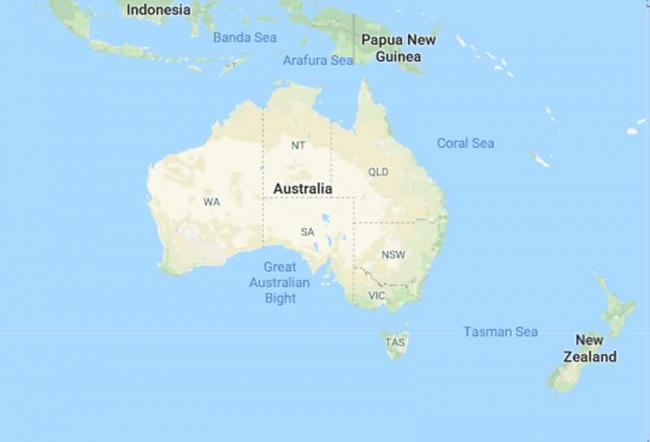
New study reveals Australia’s most endangered ocean ecosystem
Melbourne, Feb 15 (IBNS): A new study has found almost all of Australia’s shellfish reefs have disappeared, making them the country’s most threatened ocean ecosystem.
Dr Ian McLeod, Senior Research Scientist at James Cook University’s Centre for Tropical Water and Aquatic Ecosystem Research, is the co-author of a study published in the scientific journal PLOS ONE today.
Led by The Nature Conservancy, the study involved 15 scientists from 10 organisations across every state of Australia, and found that between 90 and 99% of the shellfish reefs have disappeared.
Dr McLeod said the Great Barrier Reef is probably what first springs to mind as our most endangered ocean ecosystem.
“And it’s true that the Great Barrier Reef and other coral reefs are under threat, but it’s the shellfish reefs that have really suffered the most. It’s just that most of them disappeared before we were born so people aren’t aware we’ve lost them,” said Dr McLeod.
“Most of this occurred during the 1800s and early 1900s, so the loss occurred outside the living memory of most people today – a phenomenon known as generational amnesia or shifting baselines,” he said.
The study reveals the most dramatic decline has been for reefs formed by the Australian Flat Oyster – out of 118 historical locations only one known location remains (Georges Bay, Tasmania).
The second most severe decline of the 14 bivalve species covered in the study was the native Rock Oyster, with only six locations known to still contain their ecosystems out of 60 historical locations.
“We already knew shellfish reefs were in bad shape globally with 85% of them lost or severely degraded,” said study leader Dr Chris Gillies, Marine Manager at The Nature Conservancy Australia.
“Our study confirms the situation for these important marine habitats in Australia is even worse, with less than 1% of Flat Oyster and 10% of Rock Oyster habitats remaining.”
The scientists said the good news is that, with help, these reefs are making a comeback where the threats that previously wiped them out can be avoided.
Dr McLeod said the main reasons for the reefs’ decline are overfishing, destructive fishing practices such as trawling, habitat modification, disease outbreaks, invasive species and a decline in water quality.
The scientists say oysters and mussels are ecosystem engineers that create, modify and maintain important habitat for a range of other species at a system-wide scale.
They form reefs and beds that contain unique biological communities. They also provide a range of ecosystem services such as food provision, habitat for fish and invertebrates, water filtration, fish production and shoreline protection.
The study highlights how the loss of these habitats negatively affects the economic and social wellbeing of coastal human populations, reducing the productivity of fisheries, increasing pollution risks to coastal communities and industries (e.g. aquaculture) and by increasing the cost of protecting coastal assets with built infrastructure like seawalls.
The degradation of coastal ecosystems also contributes to the release of stored carbon, worsening climate change and increasing coastal risks associated with more frequent and intense storms, sea level rise and ocean acidification.
“There is still time to arrest the decline in shellfish reefs and restore them to places where they once provided people and nature these benefits”, said Dr Gillies.
Dr Gillies said fortunately Australia is already well equipped to reverse the decline of shellfish ecosystems with a number of existing tools available to help protect and restore them.
Projects are planned or underway in every Australian state with the assistance of private, government and non-government funding. And a national network of practitioners, The Shellfish Reef Restoration Network, has been established to help support reef protection and restoration.
“At The Nature Conservancy, we have shellfish reef restoration projects underway in Port Phillip Bay, Victoria; Gulf St Vincent, South Australia; and Oyster Harbour, Western Australia,” said Dr Gillies.
“At an eventual size of 20 hectares, Windara Reef in South Australia will be the largest shellfish reef restoration project ever undertaken in Australia,” he said.
Support Our Journalism
We cannot do without you.. your contribution supports unbiased journalism
IBNS is not driven by any ism- not wokeism, not racism, not skewed secularism, not hyper right-wing or left liberal ideals, nor by any hardline religious beliefs or hyper nationalism. We want to serve you good old objective news, as they are. We do not judge or preach. We let people decide for themselves. We only try to present factual and well-sourced news.







